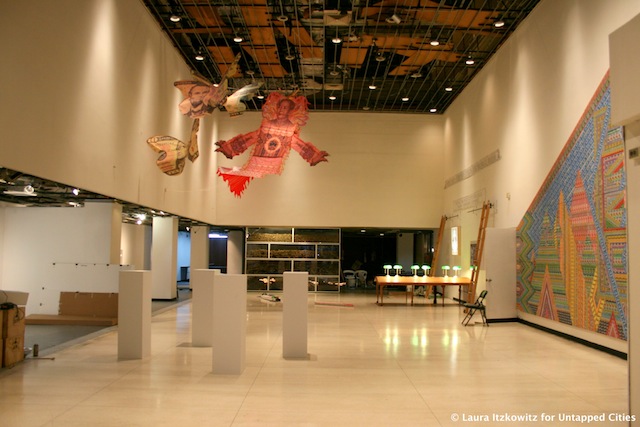
The theme for No Longer Empty’s exhibition opening on Wednesday is broad and anything but simple. In a way, the title says it all. ‘How Much Do I owe You?’ A straightforward question we use in our everyday lives. Yet, if we delve a bit deeper, it could take on a vast array of different meanings, depending on the social and political context. Each artist featured in No Longer Empty’s upcoming exhibition in the abandoned Bank of Manhattan in Long Island City was asked to create a site-specific work commenting on financial exchange.
Untapped New York is proud to be the official media sponsor of No Longer Empty’s latest exhibition. Last week, we brought you behind the scenes in the historic bank. This week, we’re giving you a preview of some of the artists’ works in “How Much Do I Owe You?”. We will also be offering an exclusive tour led by No Longer Empty and Untapped New York to a select number of lucky readers in January, please sign up here.
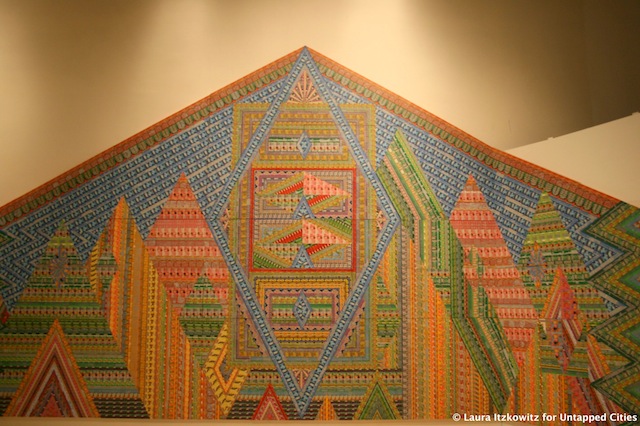
Visually, my eye was immediately drawn to this piece called ‘The Price of Happiness’ (2011) by Ghost of a Dream. Having just completed a residency in China in The Forbidden City, the collective (made up of Lauren Was and Adam Eckstrom) wanted to make a statement about the similar problems of the American and Chinese housing market. It has become so difficult to get a mortgage that people in both countries are losing their homes while high-rise apartment buildings remain half-finished with no one to move into them. The installation is made of American losing lottery tickets and Buddhist afterworld money, which take on the shape of a house, and the vertical triangles represent the volatility of the stock market.
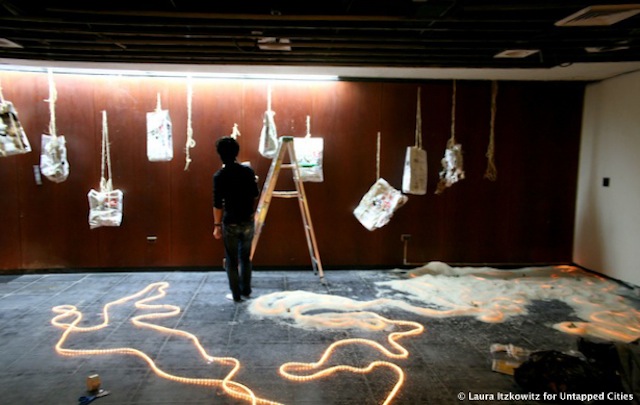
South Korean artist Hayoon Jay-Lee‘s installation addresses the relative value of goods according to different cultures. Thirteen sacks of rice hang against the wall, some of them untouched and some of them slashed to allow the rice to fall. When the work is complete, there will be rice covering all of the snaking lights and some dollar bills crumpled up among the piles of rice. The rice is a symbol of wealth and sustenance, but its value differs in American versus Asian culture. At the end of the exhibition, on March 13th, the artist will create a performance amidst the rice, in which community members will be given brown paper bags and invited to take some of the rice home, sharing in the symbolism of the piece.
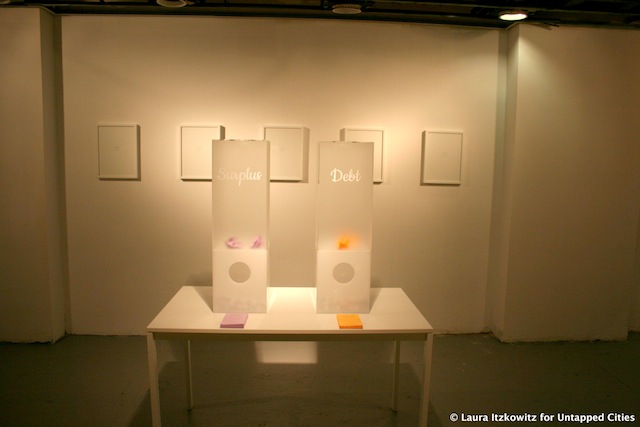
As a commentary on social economies, Jennifer Dalton has created a participatory art installation called ‘Reckoning’. Dalton has set up two surveys on memo pads, which she invites visitors to fill out specifying how they have either given more than they received or vice versa in a social context. They can then take a button labeled with words like ‘giver’ or ‘freeloader’ depending on which category they place themselves in. It’s an interesting way to get people to think about the many ways they give and take from friends and family, their workplace, and society. Dalton will be monitoring the results and creating charts to be displayed on the wall behind the receptacles.
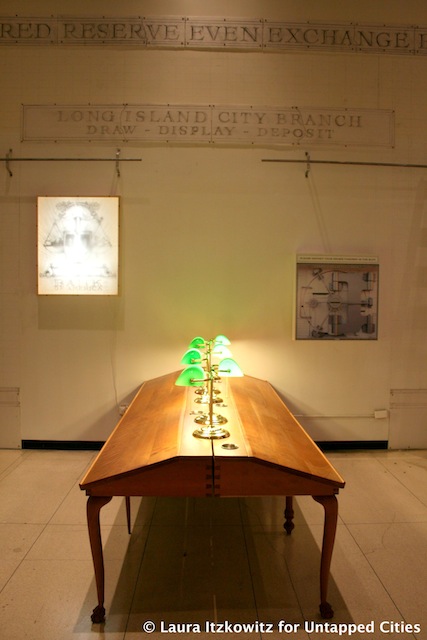
One of the most socially engaging works in the exhibition is the ‘Fundred Dollar Bill Project‘ by Mel Chin, part of an ongoing nationwide project with a mission to find a solution to lead poisoning. The project started in New Orleans, where thousands of properties have unsafe lead in the soil and 30% of the inner city population of children is affected by lead poisoning. For the Fundred Dollar Bill Project, visitors are invited to draw their own hundred dollar bill and deposit it in the vault of the Free Bank (seen on the right). When the artist has collected 300 million fundred dollar bills, the amount that represents what it would cost to rid New Orleans of lead, the bills will be driven in an armored truck and presented to the U.S. Congress with a request to exchange the drawings for real money to make lead-polluted soils safe.
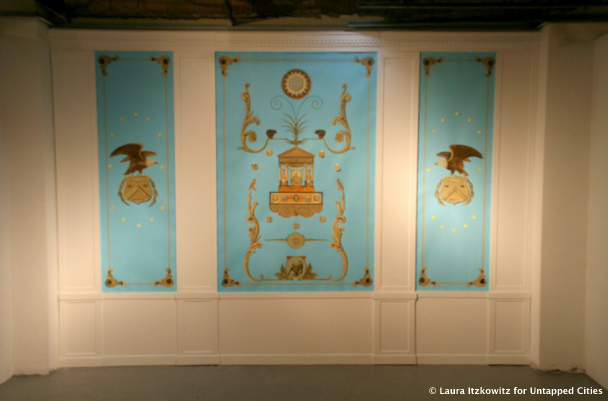
Upon seeing the empty space, Susan Hamburger was reminded of the architecture of Gothic churches, with the central nave and small chapels. She has created the ‘Cathedral of Wall Street’ as an ironic commentary on the way our society worships money, mixing religious and financial motifs. On the panels, she has hand-painted miniature portraits of some of the individuals running the Federal Reserve who are responsible for the bank bailouts. In a past work, Hamburger painted the face of tea party members onto the pieces of a tea set as another form of ironic commentary.
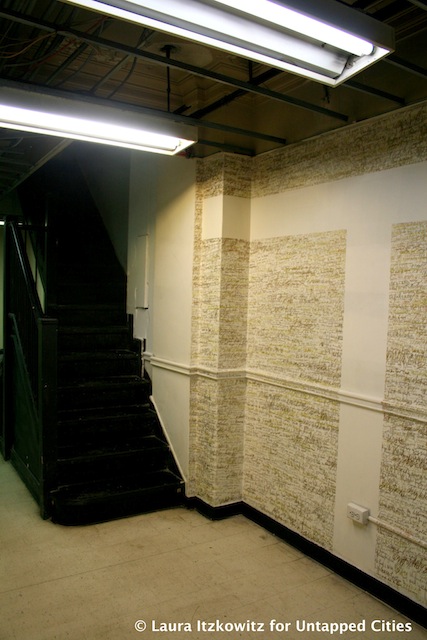
In the little stairwell between the main exhibition space and the upstairs, Ghost of a Dream has created a piece using bank slogans such as “We know money” and “What’s your dream” drawn directly on the wall. The letters in the negative space form the word TRUST, prompting us to analyze the tag lines that banks use to try to gain consumers’ trust.
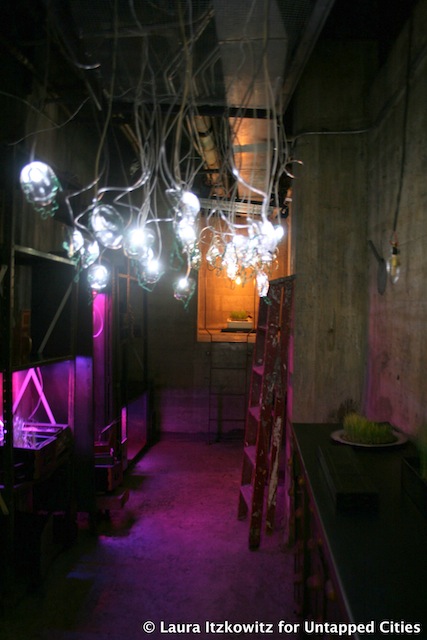
There will be works displayed downstairs in the empty vault as well. ‘Dark Treasure’ by Sol Aramendi is an installation in the most remote corner of the bank that draws our attention to immigrant labor and their contribution to the U.S. economy. From the moment she conceived this project, Aramendi began planting the corn and lavender seeds that represent the way immigrants both literally and figuratively produce the food that keeps this country going. The whimsical-looking lights are actually oxygen masks, symbolizing the struggles of immigrants. The installation also includes a large collection of vinyl records, representing memories rather than money.
The exhibition will also include several video installations, including VIVE LE CAPITAL by Israeli artist Orit Ben-Shitrit, which will play inside the main vault. There’s an installation upstairs as well, so visitors can fully explore the space and see the layers of history that make up the building.
Please join us for the opening of No Longer Empty on Wednesday, December 12th from 7-9pm with Council Member Jimmy Van Bramer, Chair of NYC Cultural Affairs Committee and the staff of Untapped New York. Sign up for our exclusive tour of the exhibition and building here.
Get in touch with the author @lauraitzkowitz.





